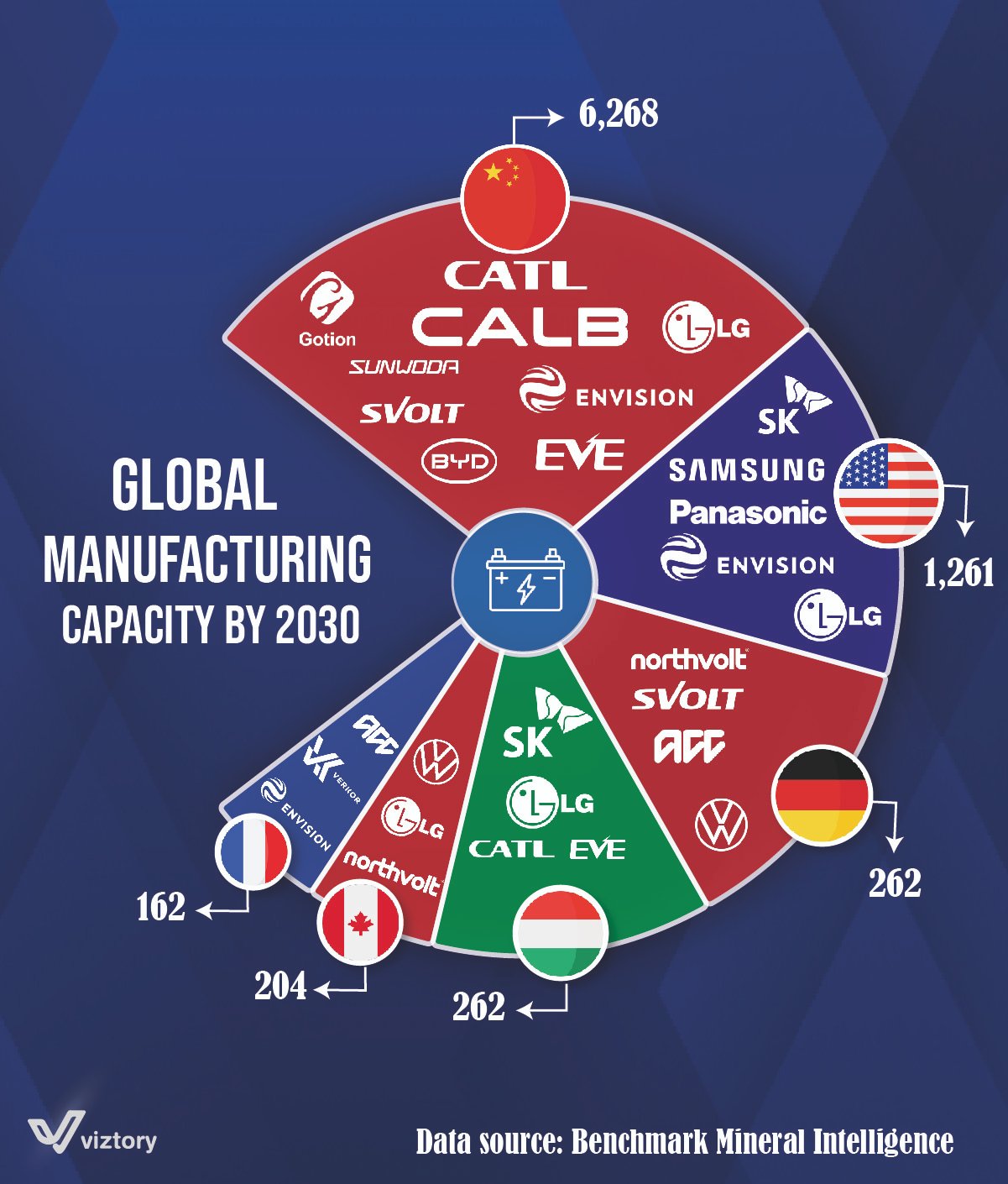The Global Battery Manufacturing Race: Technology at the Heart of the Energy Transition by 2030
-
Sep, Thu, 2024
The Global Battery Manufacturing Race: Technology at the Heart of the Energy Transition by 2030
This image represents the global manufacturing capacity distribution for batteries by 2030, based on data from “Benchmark Mineral Intelligence.” It illustrates the market share that specific countries and companies will control in this growing strategic sector. Battery technology is not only a primary driver for the electric vehicle sector but is also a fundamental part of the global energy transition.
Analysis and Explanation:
-
China Leads the Pack: As shown, China dominates with a massive capacity of 6,268 GWh, led by major companies such as CATL, CALB, BYD, and others. This large share indicates China’s strong investment in the battery industry, which is critical to support innovation in renewable energy and electric vehicle sectors.
-
United States: The U.S. ranks second with a capacity of 1,261 GWh, with major companies like Tesla, LG Energy Solution, and SK Innovation. The U.S. aims to improve its battery manufacturing capabilities as part of its strategy to achieve independence in the electric vehicle sector and reduce reliance on imports.
-
Europe: Europe is divided among several countries like Germany and France. Notable emerging companies like Northvolt play a significant role in localizing battery manufacturing within the continent.
-
Technology as a Key Element: Advanced technology plays a pivotal role in this race. The innovation of more efficient, durable, and cost-effective batteries is the key to accelerating the transition to a more sustainable energy future. For example, companies like CATL and Tesla are working on developing batteries with longer ranges and higher efficiency, which will help speed up the adoption of electric vehicles.
-
Future Challenges: Despite the expected growth, the battery industry faces key challenges such as the scarcity of raw materials used in battery manufacturing, like lithium and cobalt, and logistical challenges related to recycling. Thus, technological innovation in this field also involves developing new recycling technologies and using more sustainable materials.
Conclusion:
Technology represents the backbone of battery industry development, which is an integral part of the future global energy landscape. With the growing shift toward adopting renewable energy and electric vehicles, batteries and the technologies surrounding them will remain a critical area in the coming decades.

